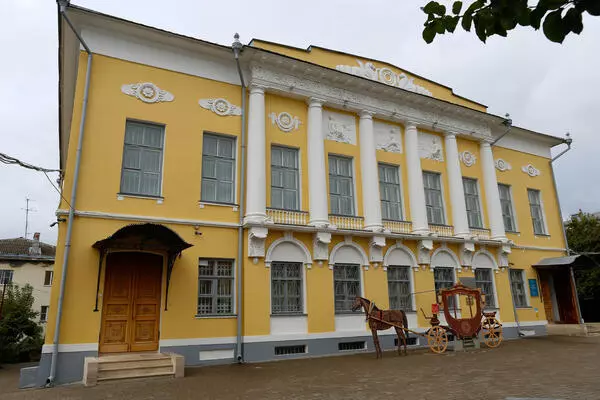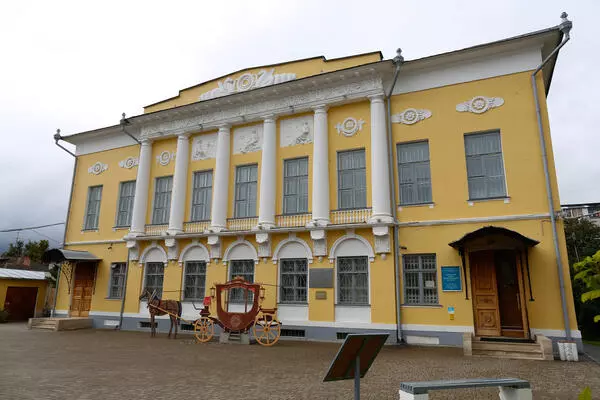The Kaluga Museum of Fine Arts was founded in 1918 by the Kaluga doctor Nikanor Vasiliev in his own house. His private collection laid the foundation for the museum’s fund.
In 1921–1935, the painter and graphic artist Vsevolod Nikolaevich Levandovsky, a graduate of the Academy of Arts, was in charge of the museum. He managed to preserve valuable artifacts from the estates of the Kaluga Governorate in the post-revolutionary years and thus enrich the collection of the museum.
Later, during the Great Patriotic War, part of the collection could not be moved out of the region, so a significant number of works were lost. Nevertheless, thanks to the museum employee Nikolay Maslov, who hid the boxes with precious exhibits, some of them were preserved. In the autumn of 1944, the Kaluga Museum reopened its doors to visitors.
Currently, the museum is located in the building of the Bilibin-Chistokletov city estate — an architectural monument of the early 19th century, an object of cultural heritage of federal significance. There are several branches of the museum — the Tarusa, Khvastovichi, Mosalsk, and Ulyanovsk art galleries, as well as the Information, Education and Exhibition Center in Kaluga.
In 1921–1935, the painter and graphic artist Vsevolod Nikolaevich Levandovsky, a graduate of the Academy of Arts, was in charge of the museum. He managed to preserve valuable artifacts from the estates of the Kaluga Governorate in the post-revolutionary years and thus enrich the collection of the museum.
Later, during the Great Patriotic War, part of the collection could not be moved out of the region, so a significant number of works were lost. Nevertheless, thanks to the museum employee Nikolay Maslov, who hid the boxes with precious exhibits, some of them were preserved. In the autumn of 1944, the Kaluga Museum reopened its doors to visitors.
Currently, the museum is located in the building of the Bilibin-Chistokletov city estate — an architectural monument of the early 19th century, an object of cultural heritage of federal significance. There are several branches of the museum — the Tarusa, Khvastovichi, Mosalsk, and Ulyanovsk art galleries, as well as the Information, Education and Exhibition Center in Kaluga.


